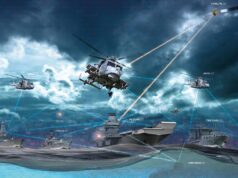Pratt & Whitney has announced that it has been awarded a $1.5M contract to conduct an F135 modernisation study and operational assessment by the F-35 Joint Program Office to determine specific propulsion system growth requirements for Block 4.2 F-35 aircraft and beyond.
The study is expected to conclude in March 2021.
“This award is a significant milestone for the program and the warfighter, as we look to ensure the F135 propulsion system continues to provide the foundation for all air vehicle capability requirements over the full lifecycle of the F-35,” said Matthew Bromberg, president, Pratt & Whitney Military Engines.
“As we look to the future, growth in aircraft capability must be met with matched propulsion modernization. Fortunately, the F135 has ample design margin to support agile and affordable upgrades that will enable all F-35 operators to keep pace with evolving threat environments.”
Under this award, it is understood Pratt & Whitney will assess F135 engine enhancements required to support future F-35 weapon system capability requirements across all F-35 variants beginning with Block 4.2 aircraft. The scope of the assessment focuses on enhancements addressing improvements to up and away thrust, powered lift thrust, power and thermal management capacity, and fuel burn reduction.
The firm say that the F135 is the most advanced operational fighter engine in the world, delivering 26% more thrust, 116% more powered lift, and more than a 300% increase in power and thermal management over 4th generation fighter engines – all with a demonstrated mission capability rate of greater than 94%.
“Built upon decades of combat propulsion experience, the F135 provides the warfighter with a critical technological advantage over adversaries at an unparalleled value to the taxpayer,” said Bromberg.
“With more than 40,000 lbs. of thrust, unmatched low-observable signature, world-class thermal management, and innovative engine control system, the F135 is a critical enabler of the F-35 weapons system and of operations conducted in advanced threat environments – a core element of the National Defense Strategy.”












Hmm, most advanced fighter engine currently available? One of the reasons it is, was that the Senate killed off the GE/RR F136 alternative engine. Part of the reason why it was killed off was because it was believed to be too advanced and used then unproven technology.
Funny old World!
F136 was only about 2% more powerful. What probably killed it was inertia, Lockheed made the plane and had their own existing engine so they could always competitively price less than a competitors engine and recover it from the planes price.
Part of the reason the F135 is more powerful than the EJ200 in the Eurofighter is size, the F135 is twice the weight and three times the volume of the Eurofighters engine.
What killed it was that the F-35 program was billions over budget. A second engine became unaffordable.
Yes and when the 2nd engine was killed the unit price miraculously became massively cheaper.
The days of having to engine options is coming to and end. Just too expensive to keep 2 engines going for the same aircraft.